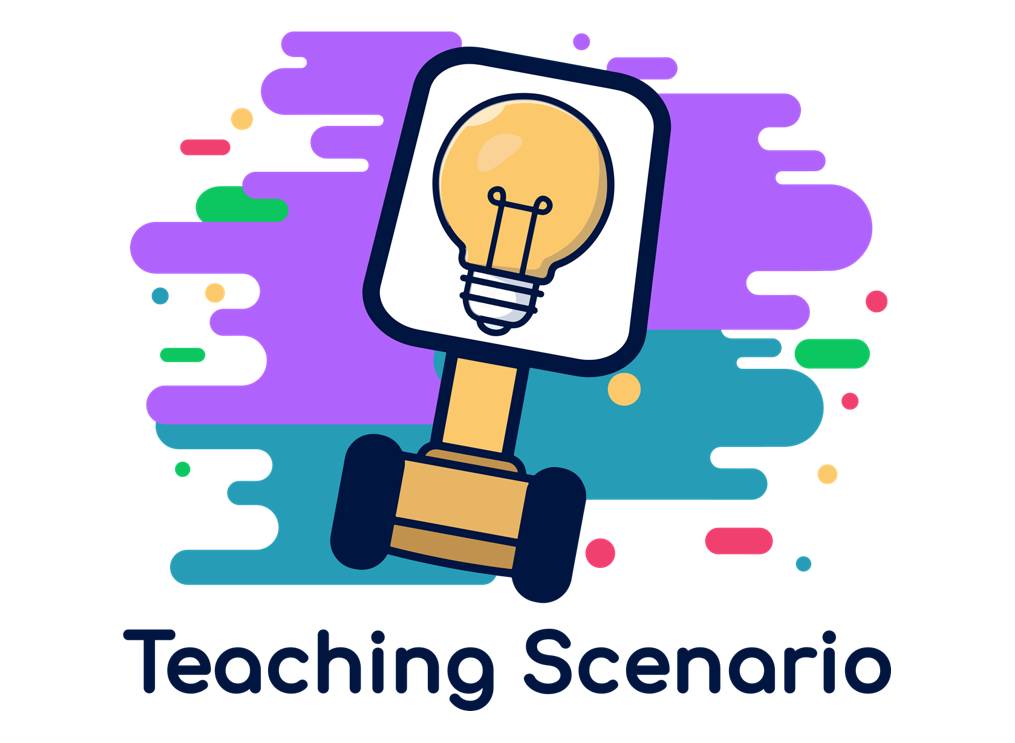
Prepare and Test a Lesson Plan
Educational Level
Higher Education
Student Age
19+
Number of students
30
Lesson duration
8 hours
- Students learn to prepare a lesson plan
- Students test a lesson plan they do not know beforehand
- Students review their lesson plan
- Students get an insight into the work they are educating for
- Students reflect on their work and the work of other students
Students will know how to:
- activate their prior knowledge
- create a lesson plan
- play their assigned role
- Be prepared for what could happen in class and how to change or adapt to work around problems
Wi-fi, other devices depend on the lesson plans, so the teacher needs to be prepared for that
Students who cannot join the class on campus were able to log into TR and be present through a telepresence robot to play their role on the day.
Collaborative Learning: Learning in groups is common practice across all levels of education. The value of learning in groups is well supported by research and is required in many disciplines. It has strong benefits for at-risk students, especially in STEM subjects. In more structured group assignments, students are often given roles that allow them to focus on specific tasks and then cycle through those roles in subsequent activities.
Discussion-Based Learning: One of the primary purposes of discussion-based learning is to facilitate students’ meaningful transition into the extended conversation that is each academic discipline. Discussions allow students to practice applying their learning and developing their critical-thinking skills in real-time interactions with other viewpoints.
Fieldwork: Students learning how to conduct research and make sound professional judgements in real-world situations
Role Plays and Simulations: Students acting out roles or improvising scripts, in a realistic and problematic social or interpersonal situation. Students playing out, either in person, or virtually, a hypothetical social situation that abstracts key elements from reality
Flipped Classroom: In the basic structure of a “flipped classroom,” the students first engage the content online (through readings, video lectures, or podcasts), then come to class for the guided practice.
Lesson Plan
Before the Lesson:
Teacher
- Set up group selection in LMS so students can divide into groups for the first part of the lesson
- Post information and guidelines in LMS
- Prepare a list of the topic’s students are to work with
- Post information’s about creation of lesson plans
- Prepare rubrics for students and post in LMS so that they know how they are to evaluate the lesson
- Book a classroom and make sure that everything that is needed is there on the day
- Let students know that if they cannot show up in person, they will have to book TR from the Center of Teaching and Learning
Students
- Read the materials they get
- Prepare for the lesson
- Go through the group selection (good idea to look at the topics and choose who they want to work with according to that)
- Book a TR if they cannot show up for the lesson
Lesson:
Teacher
- Explaining the set up in the classroom for students and where to take place
- Explain the evaluation and feedback they will need to participate in (self-evaluation and peer review)
Students
- Investigate the crime scene
- Find the evidence and draw conclusions from that
- Solve the crime
After Lesson:
Teacher
- Evaluate the students based on their self-evaluation and peer review
- Give feedback and answer any questions the students had after the lesson
- Re-evaluate the plan and materials for next time
Students
- Evaluate their role, how they did and what they wished now that they did different (self-evaluation)
- Evaluate the other students they were working with (peer review) both the first group and the second group
Author: FN, University of Akureyri
How did this Teaching Scenario work for you?
Have you tried this or a similar Teaching Scenario?
Feel free to share your experiences with a comment below.
Possible questions for your evaluation of the TRinE Teaching Scenario
- What feedback / reflection was provided by the teacher?
- How is the feedback from the students?
- Why did you decide to use TRs?
- How did the TRs inform your lesson plan?
- What shifts or stretches are you making regarding the TRs?
Does the use of the Telepresence robots:
- align to learning outcomes?
- align to assessment?
- support your educational context?
- differentiate for individual students?
- enhance student thinking by addressing different levels of thinking?
- extend learning authentically beyond the classroom?
- increase engagement and active learning?
- promote and support collaboration?
- provide opportunities to construct knowledge?
Are the students participating / motivated / progressing?
1 Comment
Submit a Comment
Create your Teaching Idea!
1. Read through our TRinE Guide for Teachers to learn more about designing a lesson with a Telepresence Robot. Browse through our TRinE Ideas and get inspired!
2. Download the Word template here to describe and evaluate your teaching scenario.
3. Contact us and send us the form if you want to publish your Teaching Scenario on our website.


Teacher’s reflection: This went very well, and the students asked if we could do this again and maybe try to work again with the same lesson plans to see if the changes they made are okay.
Student’s reflection: “It was very interesting to try different roles as a teacher and a student”
“I really want to do more of this kind of work, it was a little bit hard to think about everything when we first created the lesson plan but afterwards when we had tried the other plans, we had so many ideas to make our better”
– Why did you decide to use TRs? Because some students could not show up due to different reasons
– How did the TRs inform your lesson plan? I did not really, Wi-Fi is good in the school, and they booked the TR’s themselves
– What shifts or stretches are you making regarding the TRs? I find it very important to give the students that cannot show up a possibility to participate but I did not really have to change anything.
Lesson Plan Evaluation:
The only thing that the TR changes here is that the students can show up and participate in the work. This way of teaching, role play and flipped classroom does motivate the students and the TR helps if someone is suddenly unable to come to the classroom on the day. Before TR’s students would miss out and not get this experience.
This lesson is all about collaboration and students working in groups, it doesn’t work if they are not participating fully.